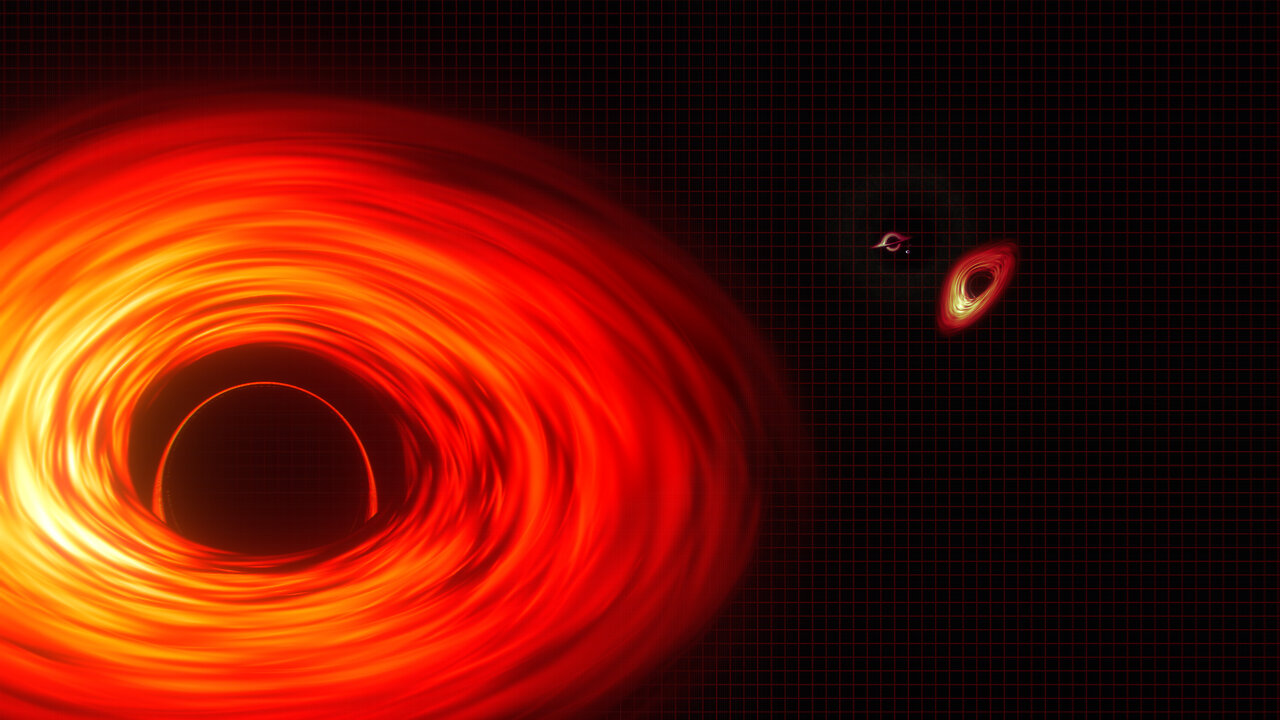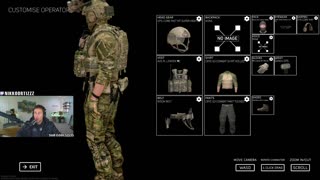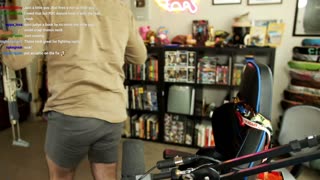Premium Only Content

AI Finds The Size Of Biggest Black Hole
Editor's Note: A previous version of this video mislabeled
the orbit of Saturn as the orbit of Jupiter.
This new NASA animation highlights the "super" in
supermassive black holes. These monsters lurk in the
centers of most big galaxies, including our own Milky Way,
and contain between 100,000 and tens of billions of times
more mnass than our Sun.
Any light crossing the event horizon - the black hole's
point of no return - becomes trapped forever, and any
light passing close to it is redirected by the black hole's
intense gravity. Together, these effects produce a
"shadow" about twice the size of the black hole's actual
event horizon.
The animation shows 10 supersized black holes that
occupy center stage in their host galaxies, including the
Milky Way and M87, scaled by the sizes of their shadows.
Starting near the Sun, the camera steadily pulls back to
compare ever-larger black holes to different structures in
our solar system.
First up is 1601+3113, a dwarf galaxy hosting a black hole
packed with the mass of 100,000 Suns. The matter is so
compressed that even the black hole's shadow is smaller
than our Sun.
The black hole at the heart of our own galaxy, called
Sagittarius A* (pronounced ay-star), boasts the weight of
4.3 million Suns based on long-term tracking of stars in
orbit around it. It's shadow diameter spans about half that
of Mercury's orbit in our solar system.
The animation shows two monster black holes in the
galaxy known as NGC 7727. Located about 1,600
light-years apart, one weighs 6 million solar masses and
the other more than 150 million Suns. Astronomers saythe pair will merge within the next 250 million years.
At the animation's larger scale lies M87's black hole, now
with a updated mass of 5.4 billion Suns. Its shadow is so
big that even a beam of light - traveling at 670 million
mph (1 billion kph) - would take about two and a half days
to cross it.
The movie ends with TON 618, one of a handful of
extremely distant and massive black holes for which
astronomers have direct measurements. This behemoth
Contains more than 60 billion solar masses, and it boasts
a shadow so large that a beam of light would take weeks
to traverse it.
Music credit: "In the Stars" from Universal Production
Music
Credit: NASA's Goddard Space Flight Center Conceptual
Image Lab
Lead Producer: Scott Wiessinger (KBRwyle)
Lead Animator: Krystofer Kim (KBRwyle)
Lead Science writer: Francis Reddy (University of Maryland
College Park)
Visualizer: Jeremy Schnittman (NASA/GSFC)
Producer: Sophia Roberts (AIMM)
Scientist: Jeremy Schnittman (NASA/GSFC)
-
 LIVE
LIVE
Nikko Ortiz
1 hour agoLIVE STREAM!!!
1,435 watching -
 LIVE
LIVE
The White House
3 hours agoPresident Trump Participates in a Cabinet Meeting, July 08, 2025
1,939 watching -
 LIVE
LIVE
Donut Operator
1 hour agoCRIME/ FLOODS: communityfoundation . net
530 watching -
 DVR
DVR
The Rubin Report
1 hour agoPress Sec. Struggles to Hide Her Anger as Reporter Implies He Doesn’t Believe Her Epstein Story
110K57 -
![What Trump’s Big Beautiful Bill Means for Your Wallet - Dr. Kirk Elliott; 3+ [ N A T U R A L ] Tips to Stay Healthy - Dr. Troy Spurrill | FOC Show](https://1a-1791.com/video/fww1/df/s8/1/o/9/s/0/o9s0y.0kob.2-small-What-Trumps-Big-Beautiful-B.jpg) LIVE
LIVE
Flyover Conservatives
1 hour agoWhat Trump’s Big Beautiful Bill Means for Your Wallet - Dr. Kirk Elliott; 3+ [ N A T U R A L ] Tips to Stay Healthy - Dr. Troy Spurrill | FOC Show
297 watching -
 LIVE
LIVE
LFA TV
15 hours agoLFA TV ALL DAY STREAM - TUESDAY 7/8/25
4,686 watching -
 LIVE
LIVE
The Mel K Show
1 hour agoMORNINGS WITH MEL K - Order Out of Chaos: International Global Governance Model Pushes Forward Despite Mass Rejection 7-8-25
763 watching -
 LIVE
LIVE
The Shannon Joy Show
2 hours ago🔥🔥Trump’s AG Pam Bondi Exonerates Epstein’s Pedos While Persecuting HERO Doctor Kirk Moore!🔥🔥
210 watching -
 12:51
12:51
Dr. Nick Zyrowski
1 day agoThe INCREDIBLE Benefits of Red Light Therapy
11.9K1 -
 2:20:07
2:20:07
Tucker Carlson
4 hours agoTucker and Saagar Enjeti on the Dangerous New Developments in Pam Bondi’s Epstein Cover-Up
93.6K93